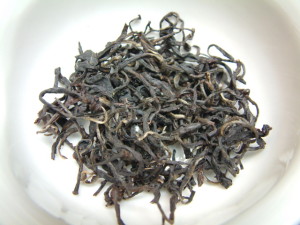We continue to be fascinated by India and a recent addition of Black Fusion from Doke Estate in the state Bihar only feeds our interest in this dynamic and complicated country. In prior blogs we’ve spent some time discussing Darjeeling, Assam, and even Nilgiri far to the south and west of the country. As we add Black Fusion to our offerings we figured it would be great to provide a bit of background to this region which is far less well known for tea.
Doke Estate
Doke Estate, established in 1998 originally for CTC production, is located on the banks of the Doke River in Pothia within the Kishanganj district of the state of Bihar. The district technically borders both the Darjeeling District of West Bengal and the country of Nepal, though is actually quite flat, sitting about 800 ft above sea level. This is in dramatic contrast to high grown tea estates of Darjeeling ranging between 4,000 and 6,000 ft in elevation. Owned by the well known Lochan family, this estate was built on land previously thought to be useless for agricultural purposes and is now used for hand made orthodox teas. The nearby Doke River, now with water year round, used to be monsoon fed and is now providing water for irrigation thanks to a nearby hydro-electric power dam and making tea production possible. While their Black Fusion has garnered a lot of attention the estate does produce other hand-made teas as well including green and white teas.
Kishanganj and Pothia
Pothia, where Doke Estate sits, and the broader region of Kishanganj in Bihar isn’t nearly as well known in tea circles as its nearby neighbors of Assam and Darjeeling. While it has had tea plantations since the 1990’s it has struggled to develop it into a large industry and still must rely heavily on processing facilities in West Bengal. However, the industry has continued to grow bringing much needed jobs to the region and slowing migration away from the district. (Prasad)
Tea aside, this district which at one time was part of Nepal, is about the size of the Hawaiian island of Maui with a population about the size of Idaho. It is one of the poorest regions in India with a 30% literacy rate (~18% among women) and has suffered severe floods and high rates of Polio infection leading UNICEF and other organizations to organize large efforts to immunize large parts of the population.
The state of Bihar is well known in Buddhist circles as it is home to Bodh Gaya, the most holy place on earth for its followers, and a UNESCO World Heritage Site.
Black Fusion, Doke Estate
We’ll admit to choosing to add Black Fusion before learning a lot about Bihar and now that we have, we hope to learn more. The 2014 Black Fusion is an exceptional black tea. This tea is unique in that it carries qualities of both assam and darjeeling teas yet is grown at a low elevation on flat land. The flavor is fruity with a clean finish expected of assam.
In appearance this is a large, long wiry leaf which is beautiful to admire both prior to steeping and after infusion. The pluck is two leaves and a bud most of which are fully intact and unroll nicely when infused. Steep 3-4 grams slightly cooler than a typical black tea at about 195°F for a more complex buttery flavor profile or hotter with 205°F for a slightly bolder and more malty taste.
Sources
Tea City status eludes Kishanganj, by Bhuvaneshwar Prasad, Oct 20, 2010, The Times of India, http://timesofindia.indiatimes.com/city/patna/Tea-City-status-eludes-Kishanganj/articleshow/6777156.cms
Evaluation of Social Mobilization Network (SMNet)- FINAL REPORT, January 2014, UNICEF, http://www.unicef.org/evaldatabase/files/India_2013-001_Evaluation_of_Social_Mobilization_Network_Final_Report.pdf
Kishanganj District Profile, http://www.kishanganj.bih.nic.in/District%20Profile.htm



